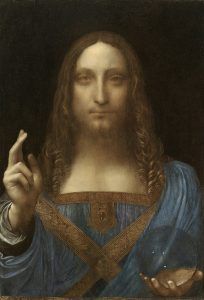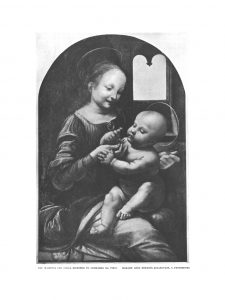by Leanne Ogasawara

It was mid-summer 2011 when the news broke that a long-lost Leonardo da Vinci painting had been found. Apparently, a New York City art dealer noticed the picture at an estate sale in Louisiana and purchased it for around $10,000. This occurred back in 2005, and the following six years were spent in painstaking work to research and restore the painting. Now in 2011, it was making its public debut in a high profile blockbuster exhibition at the National Gallery in London.
My first thought was: “This is the greatest art historical discovery of my lifetime!”
After all, it has been over a hundred years since the last Leonardo was officially “discovered.” This happened when the Benois Madonna was triumphantly trotted onto the world stage in Saint Petersburg, in 1909. Considered to be one of two very early Madonna paintings that the master himself mentioned working on in his notebooks in 1478, the painting was bought by the Hermitage Museum in 1918 and has remained in that collection ever since. This purchase being much to the chagrin of the American industrialist and art patron Henry Clay Frick, who had plunked down a hefty deposit for the picture– only to lose out in the end, when the Russian czar swooped down to exercise his right to purchase.

Not a prolific artist, it is hard to say which was worse: Leonardo’s chronic procrastination and inability to finish projects or the highly experimental methods in technique and materials that he favored. The result being that not many paintings remain in what is broadly agreed upon by experts to have been done in his hand. Prior to the new 2005 discovery, there were fewer than twenty pictures. So the new discovery was immediately –and not surprisingly– met with a deluge of doubts. First of all, how does one lose something this valuable in the first place? Shouldn’t there by a seamless trail of the work from its conception and initial purchase by a king or duke down through history, as it changes hands for greater and greater sums of money? Leonardo was, after all, legendary even during his own lifetime, with kings and queens clamoring to obtain paintings from the great master. And unlike with my favorite artist, Piero della Francesca, his work never fell out of favor. Read more »
